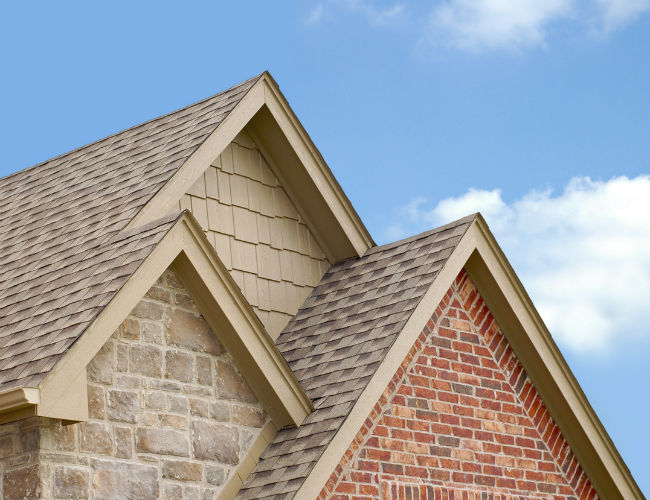We may earn revenue from the products available on this page and participate in affiliate programs. Learn More ›
The roofing system is one of the most important structural features of a house. A layer of roof shingles on top of the roof frame protects the interior of the home from rain, snow, and other environmental stresses, allowing those inside to stay safe and comfortable.
There are many types of roof shingles, so choosing one style can be a real challenge for many homeowners. This guide explains the characteristics of popular types of shingles so it’s easier to choose the best option for a home.
Parts of a Shingle
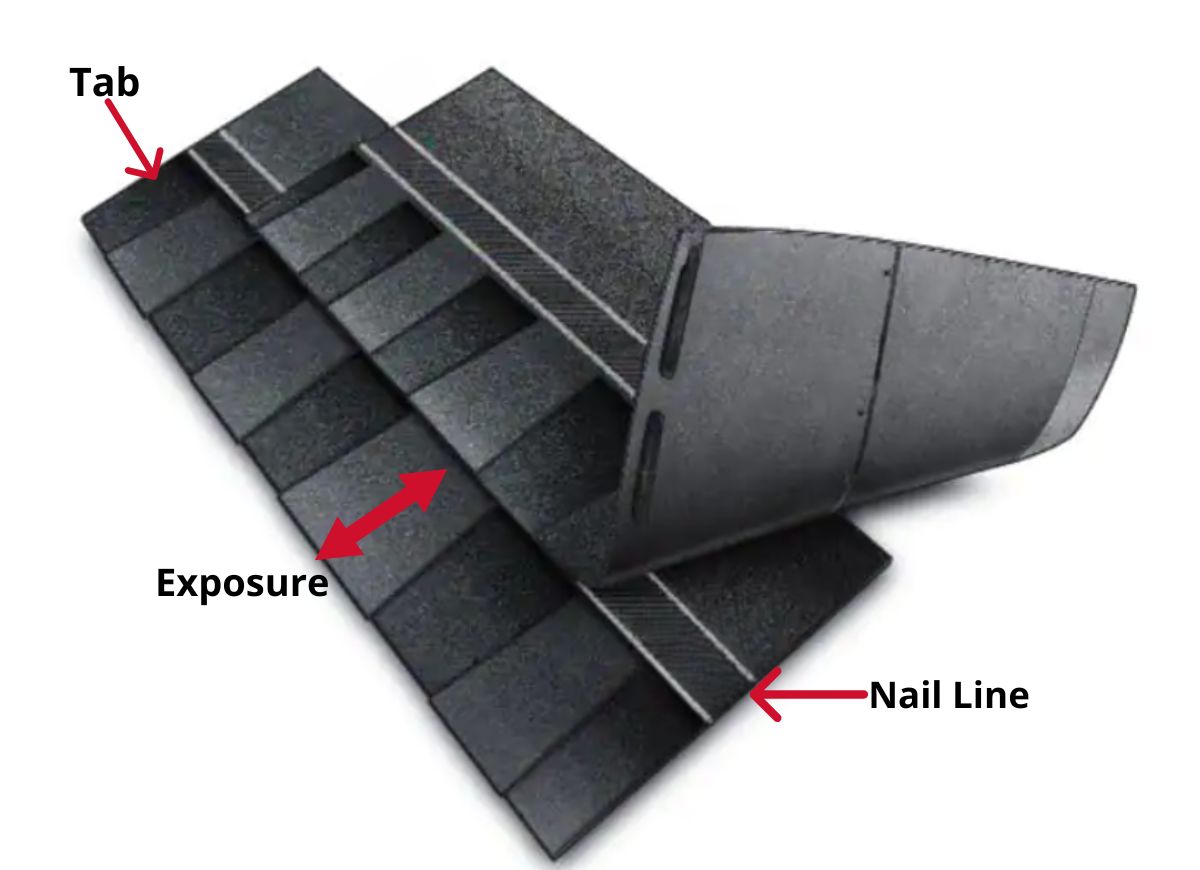
It’s helpful to understand the different parts of shingles, whether it’s for choosing the best style that fits with a particular house construction—or because you’re about to install a new roof on an existing home.
The most important parts of the shingle are:
- Tab: The tabs are the lower sections of the shingles that are exposed to the elements, which slits between them to make them look like individual parts of the shingle when installed. Some shingles have just one tab and others can have up to three tabs.
- Exposure: The exposure explains how much of the shingle will show after installation. It simply refers to the exposed area of the shingle, which can also be called the “butt.”
- Nail line: The nail line is the tar-lined area of the shingle through which the installer drives the nails. Sticking to this line allows all of the fasteners to be hidden from view (and protected from the weather) once installed.
Types of Roof Shingles
The following are some of the most common types of roofing shingles on the market, as well as a few antique and up-and-coming styles that are not quite as well known. Each type has its merits and drawbacks, but it’s a good idea to become familiar with all types before deciding which are best for your home.
1. Asphalt Shingles
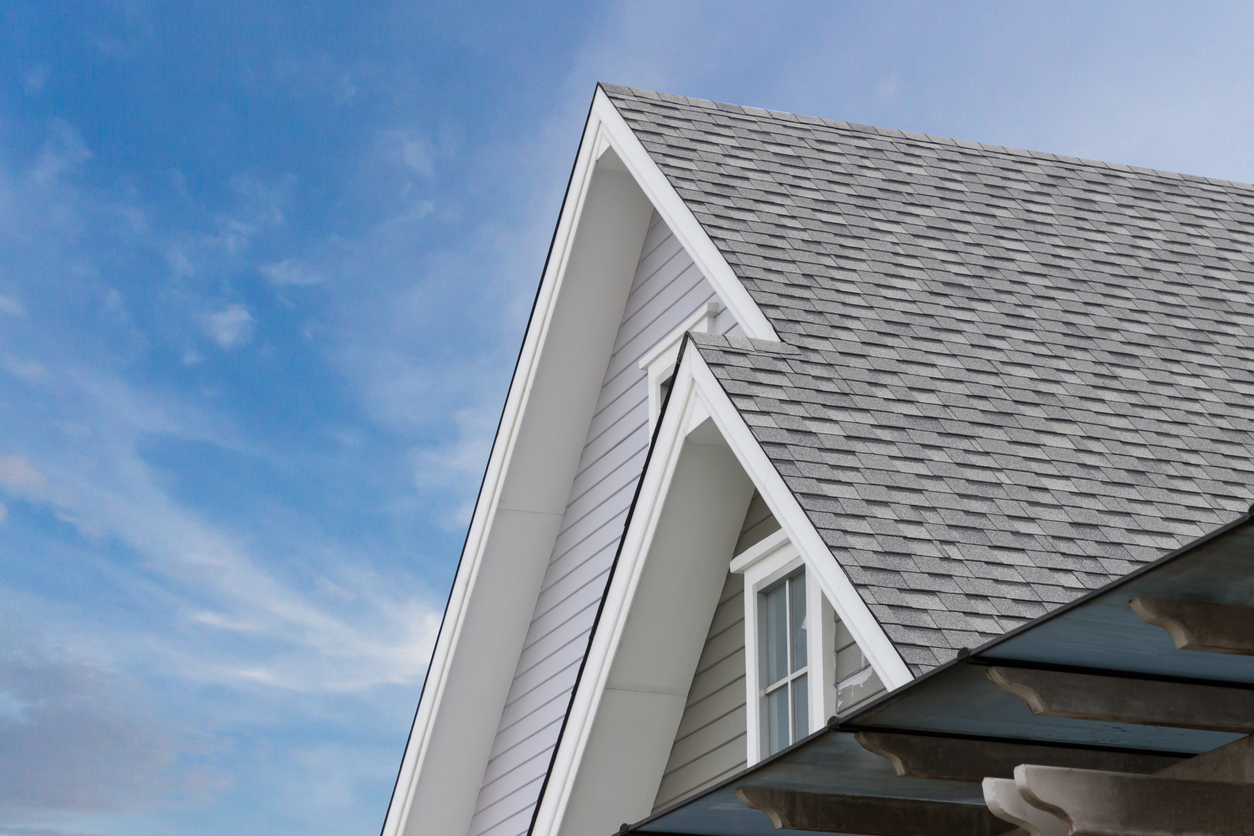
Asphalt shingles, which are made of asphalt reinforced by fiberglass or organic materials like wood or cellulose, are sold in multiple sizes and colors in a thicker, multi-layered “dimensional” or “architectural” variety (pictured above) and a flatter, thinner, single-layered “3-tab” variety. These types of shingles are the least expensive and most widely available, costing around $1.00 per square foot and $100 per square (a roofing measurement equivalent to 100 square feet of material)—not including any additional insulation, underlayment, or labor—and lasting 15 to 30 years or more. However, they can take 300 or more years to fully decompose, so they aren’t the most sustainable option.
Asphalt shingles are also waterproof, fireproof (fiberglass more so than organic), flexible enough to withstand the weight of snow, and resilient in small to moderate hail storms in the case of those with a Class 3 or higher impact-resistance rating (Class 4 being the highest rating).
The downside to asphalt shingles is that they can buckle and come loose when they are exposed to high winds and sudden temperature fluctuations. Fortunately, when small repairs are necessary, the light weight of these shingles makes them easier for homeowners to lift up and replace individually, or simply re-adhere blown-off shingles by adding roof cement above and below them.
Best For: Budget-friendly traditional homes and non-severe weather locations
Our Recommendation: Timberline Natural Shadow Architectural Shingles on Home Depot for $42 per bundle.
Timberline’s Architectural Shingles are a budget-friendly option that also feature algae protection and come in a variety of colors.
2. Wood Shingles
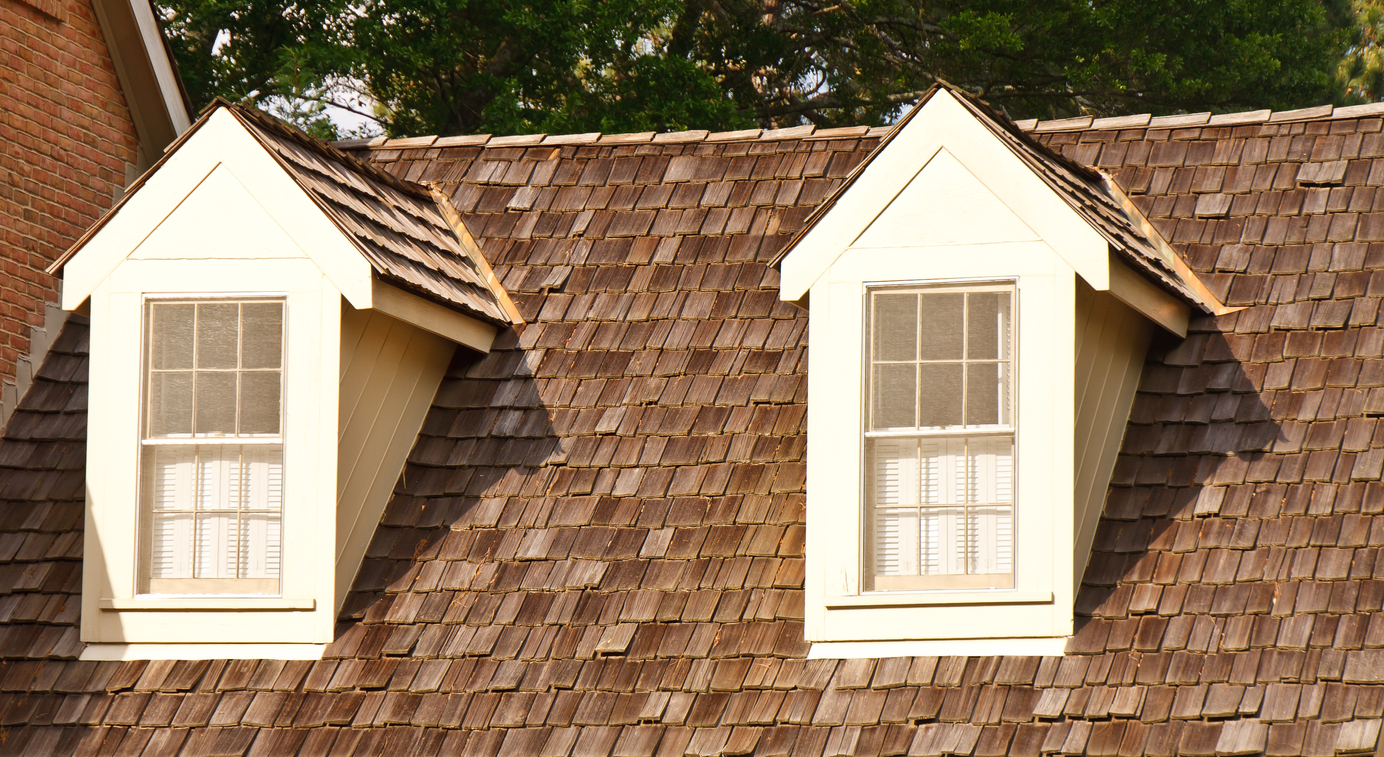
Wood shingles are machine-cut from cedar, spruce, or pine to offer a trim yet natural-looking and environmentally-friendly option that lasts 20 to 25 years. Plus, this type of shingle comes at an economical price point: It costs more than asphalt and less than clay/concrete and composite tiles, at $4.88 per square foot ($480 per square) according to Home Advisor.
Following installation, it’s easy to power-wash mildew- or mold-ridden shingles, but damaged individual shingles often need to be replaced rather than repaired, and the plywood decking required below the shingles makes them more difficult to replace on your own than asphalt shingles.
But unless you choose wood shingles with a Class A fire rating, these shingles aren’t fit for extremely hot and dry or wet climates, as they’re vulnerable to fire, rot, hail, and termites—any of which can cause them to chip, crack, or split. Installing them in the Great Plains is your best bet so long as the fire code in your region doesn’t forbid their installation.
Best For: Rustic homes and outdoor structures, not including hot regions
Our Recommendation: Consult with a roofing supplier
RELATED: Metal Roofs 101: How They’re Made, and Why They’re Worth Considering
3. Metal Shingles
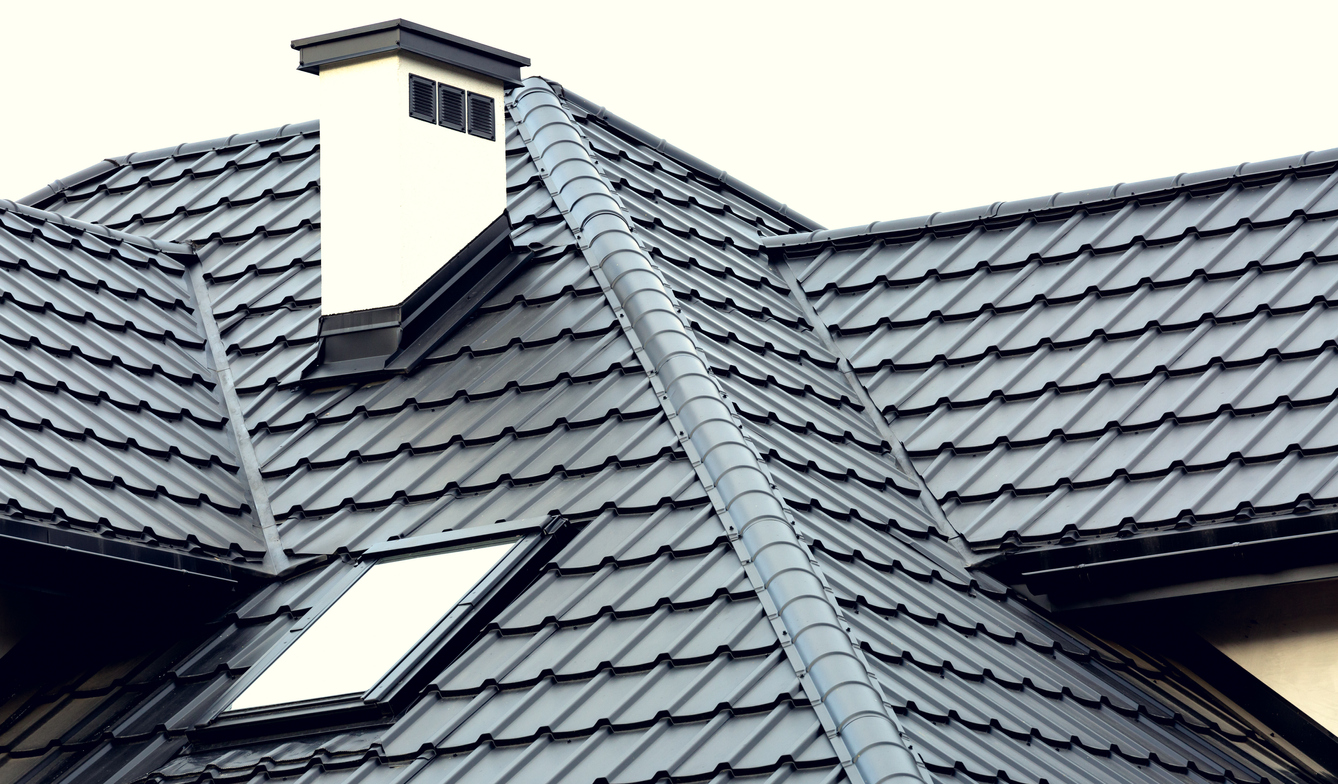
Metal shingles—consisting of aluminum, steel, copper, or an alloy stamped into a variety of shapes—are among the most energy-efficient of all shingle types. Why? They reflect sunlight rather than absorb it, and thereby lower cooling costs throughout their long life of 50 to 75 years. They can also be recycled, so they are a more sustainable pick than asphalt.
Their resistance to rain, rot, wind, fire, and hail make metal shingles an apt choice for homes in the rain-battered Northwest or Southeast. It’s worth noting, though, that some of this precipitation can have other consequences for metal roofs: Hail can dent steel shingles, while rain sounds louder on a metal roof than the average roof (unless you’ve installed additional layers solid sheathing or insulation beneath these shingles for an additional cost). Overall, metal shingles cost more than either asphalt or wood shingles, on the order of $3 to $18 per square foot ($300 to $1,800 per square).
Best For: Homes in the Northwest and Southeast
Our Recommendation: Consult with a roofing supplier
RELATED: 4 Reasons Homeowners Choose Tile Roofs
4. Slate Shingles
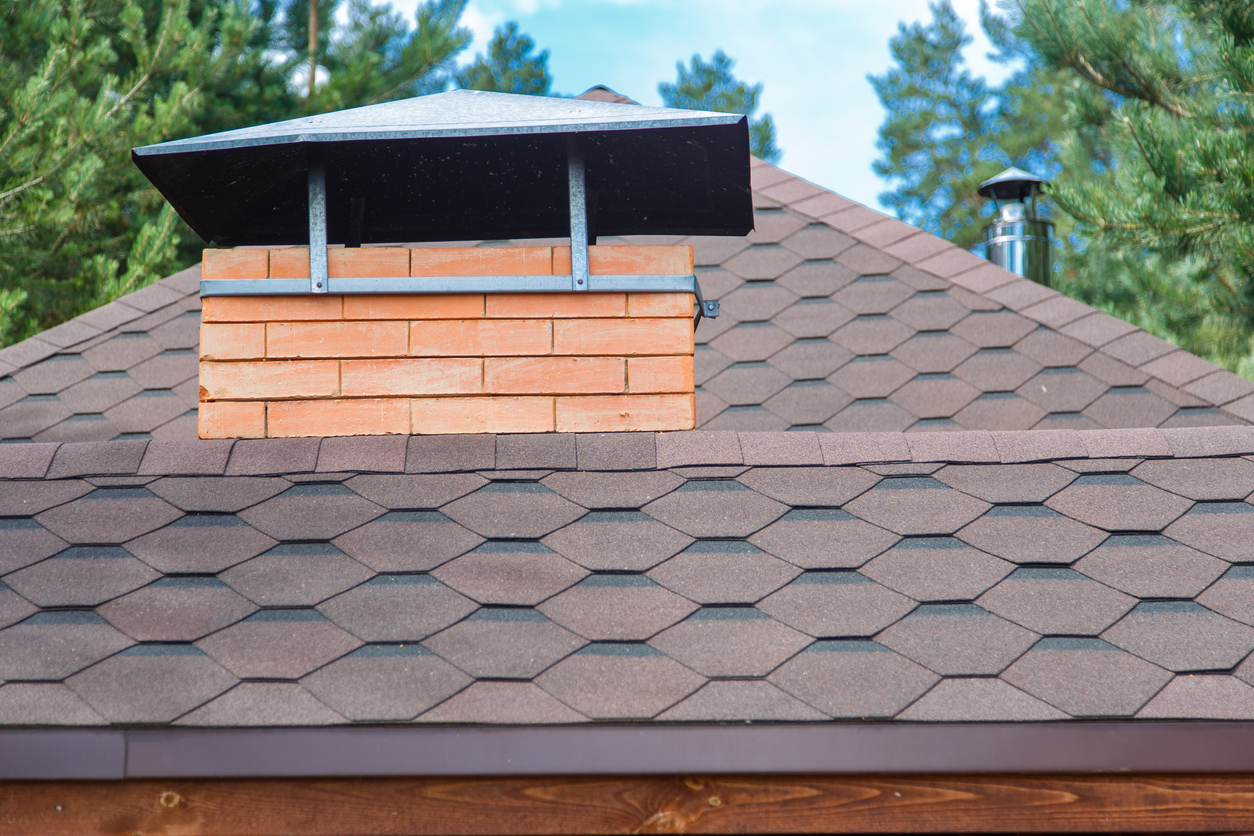
Slate shingles’ sleek yet rugged composition contributes to their elegance and durability. While the heat-, hail-, and moisture-resistant, noncombustible shingles with a low propensity for leaks last anywhere from 50 to 100 years in all climates, their capacity to withstand large volumes of snow makes them the best choice for homes in the Midwest. They are also a more sustainable pick than other materials, like clay and concrete.
This type of roof can run $8 to $18 per square foot ($1,100 to $2,000 per square), not including additional expenses incurred due to their heavy weight, the need for additional framing during installation, and the relative scarcity of companies that install them.
Note that certain roof structures simply can’t withstand the weight of slate shingles. Consult with a structural engineer before installation. Afterward, leave repairing or replacing individual shingles to the pros to avoid injuring yourself under their weight.
Best For: Historical homes and luxury custom homes
Our Recommendation: Consult with a roofing supplier
5. Clay Shingles
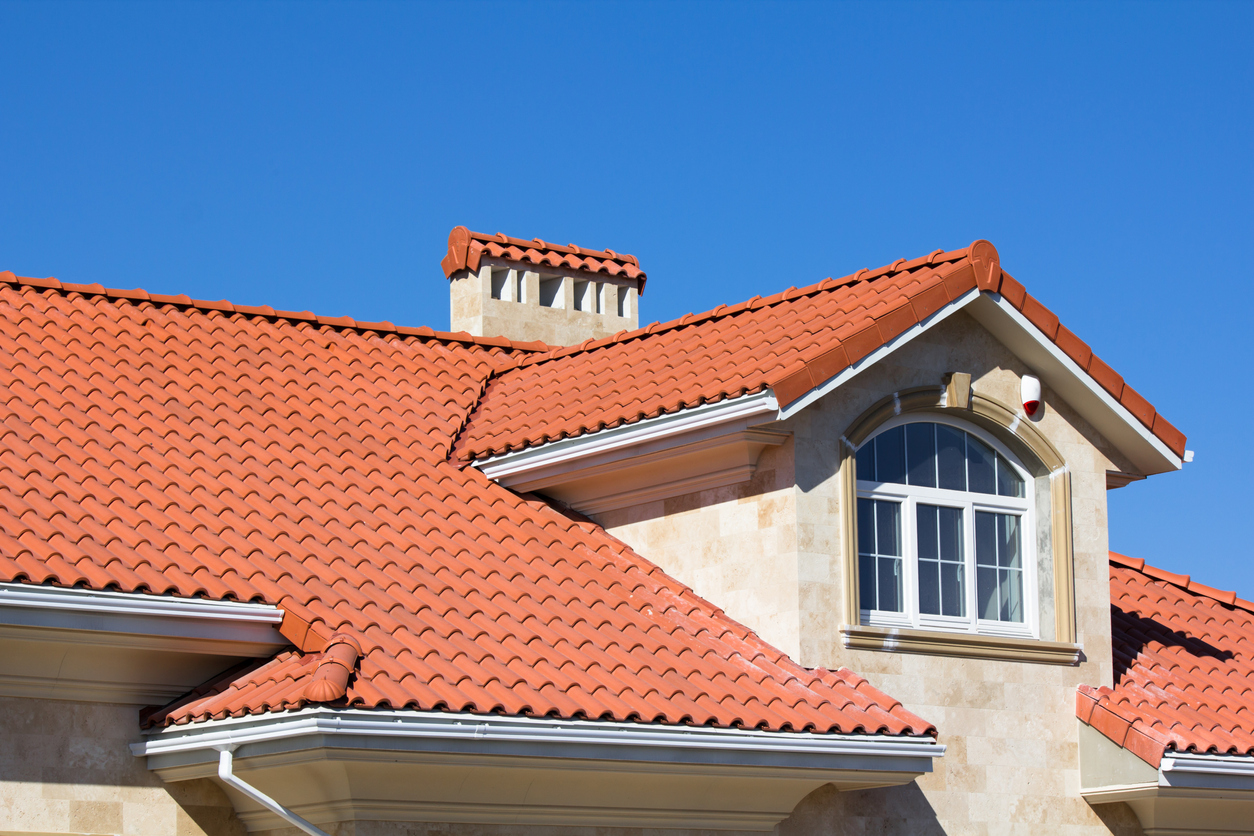
Clay shingles—molded out into flat, barrel-shaped (pictured above), or scalloped tiles of different colors—are popular in Spanish-style homes in the Southwest. Clay is also noncombustible and non-fading, and it’s free of pollutants. They are a sustainable pick, too, given that the shingles consist of just water and clay.
Roofs made with this type of shingle warrant a consultation with a structural engineer to make sure the home can support their weight. Typically, a roof will still need extra framing during installation to support a clay-tiled roof.
When all is said and done, though, you can expect a cost of anywhere from $8 to $18 per square foot ($800 to $1,800 per square) and an investment that lasts from 40 to 50 years, or better. You can repair these tiles on your own with roofing cement, but individually replacing them on your own is difficult due to the weight and limited impact resistance of individual tiles.
Best For: Homes in warm, dry climates, like the Southwest
Our Recommendation: Consult a local roofing supplier
6. Concrete Shingles
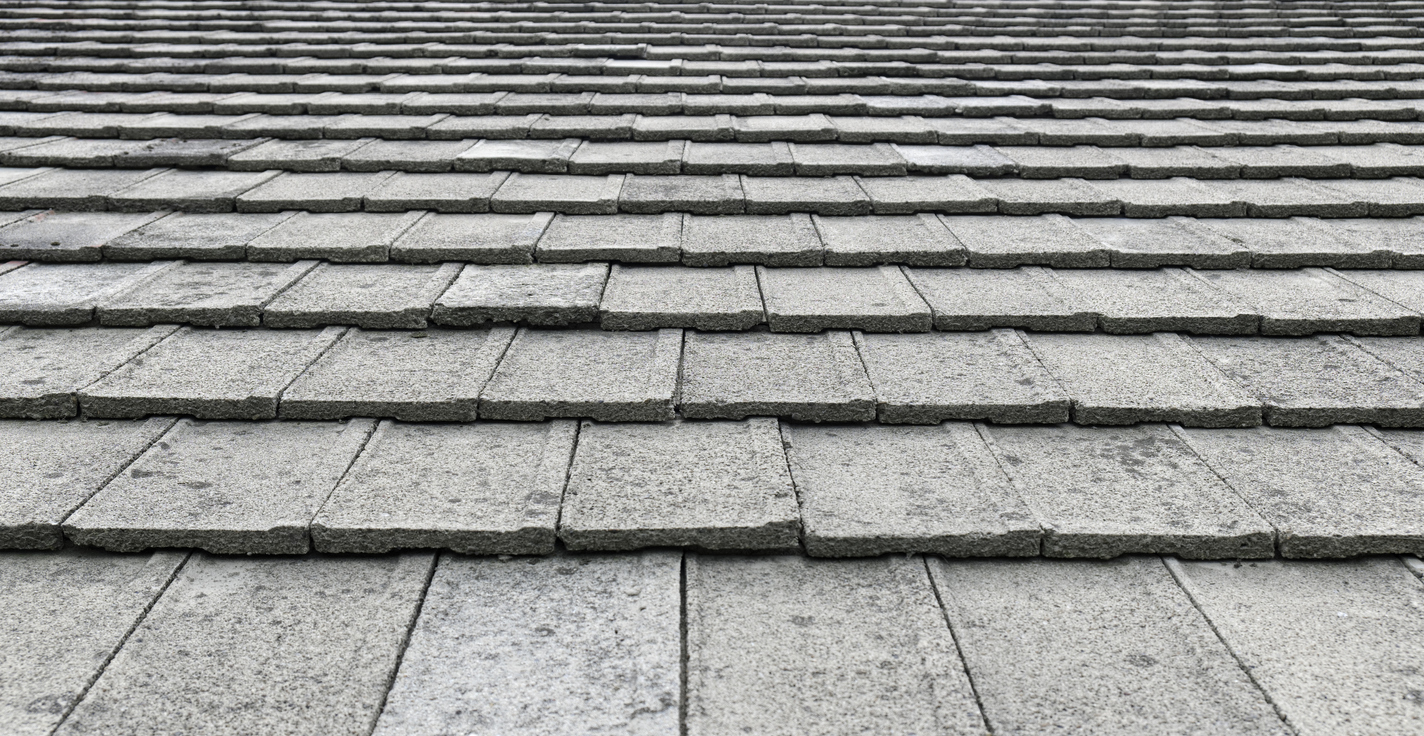
With a history extending more than 150 years and sustainable ingredients from the earth, concrete tiles are also a long-lasting roofing material. They are used in similar applications as clay shingles, but they reflect sunlight better than clay tile roofing and effectively insulate interiors better from heat and cold. What’s more, concrete is less expensive—about $2 to $4 per square foot—than clay shingles. The downside to concrete shingles is, well, they’re made of concrete—these shingles weigh more than their clay counterparts, and can be more work to install.
There is a wide choice of color and styles that can mimic a variety of other roofing materials as they can be easily colored and textured. Even though they are mostly known for roofing homes in the Southwest, they can work well in northern climates. And when the concrete is locally sourced, these shingles are a sustainable choice.
Best For: Dry and warm climates where cost is a factor
Our Recommendation: Consult a local roofing supplier
7. Composite Shingles

Composite shingles, which are made of polymer, rubber, or plastic and sold in a variety of colors and styles, convincingly mimic the look and feel of shingles made of natural materials such as wood or slate. These shingles retain their color over their lifespan of 50-plus years, are heat- and impact-resistant to varying degrees (those with a Class-A fire rating and Class-4 impact-resistance rating offer the best resistance to fire and hail). The ingredients determine the level of sustainability, and additives in some composite shingles lend them additional defenses such as moss and UV resistance. Composite shingles cost between $7 to $14 per square foot installed.
One disadvantage of composite shingles is that they usually offer less insulation than the materials they mimic, which will raise your heating or cooling costs. And, while they’re suitable for installation in all climates, low-quality composite shingles—which can be prone to absorbing water—may soak, freeze, and warp more quickly in locations that frequently experience rain or regular cycles of freezing and thawing.
A relative scarcity of roofers experienced with this fairly new type of shingle can also make it tricky to achieve a quality installation. It’s also important to note that composite shingles are challenging to find, and shoppers will have to consult roofing suppliers.
Best For: Homeowners who want low-maintenance slate-looking roofs without the expense, or wood-look roofs with better fire ratings
Our Recommendation: Consult a roofing supplier
8. 3-Tab Shingles
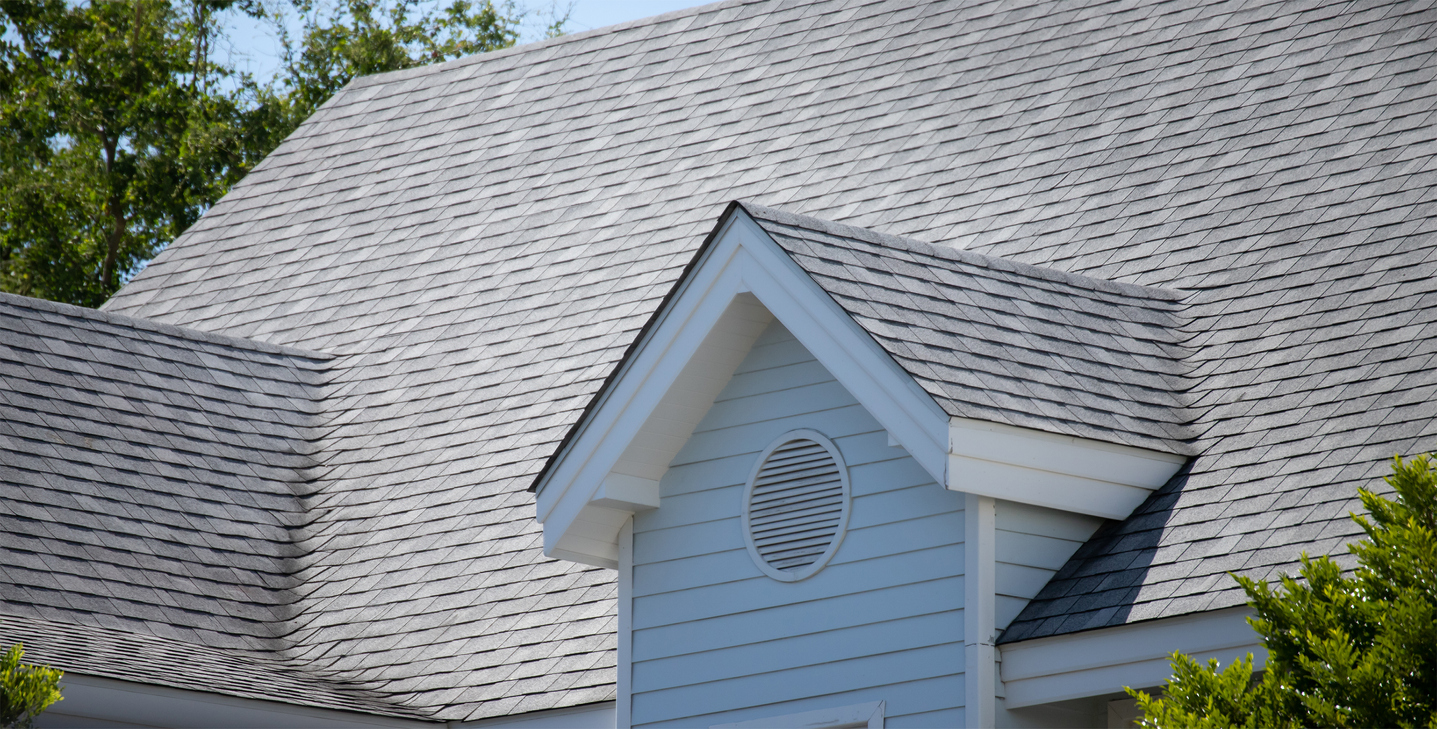
Three-tab shingles are among the most typical shingle designs. These shingles are made from asphalt, and each shingle has two slits in the exposure, creating the look of three individual tabs. Once installed, the courses on top typically land just below the top of the slit, giving the roof the appearance that it consists of individual shingles.
Three-tab shingles are some of the least expensive shingles on the market, and run about $1 per square foot ($100 per square). They’re usually single-layered (unlike architectural shingles), which makes them lighter and easier to work with. However, they have generally lower wind resistances and shorter service lives and warranty periods than other types of shingles, which leads to more roofing in landfills for hundreds of years. Since they are affordable and can work on most types of homes, they’re still a very popular option.
Best For: Budget-friendly installations in low-wind areas
Our Recommendation: GAF Three-Tab Shingles on The Home Depot for $39 per bundle
GAF’s Three-Tab shingles are affordable, offer algae protection, and feature a 25-year warranty.
9. Architectural Shingles
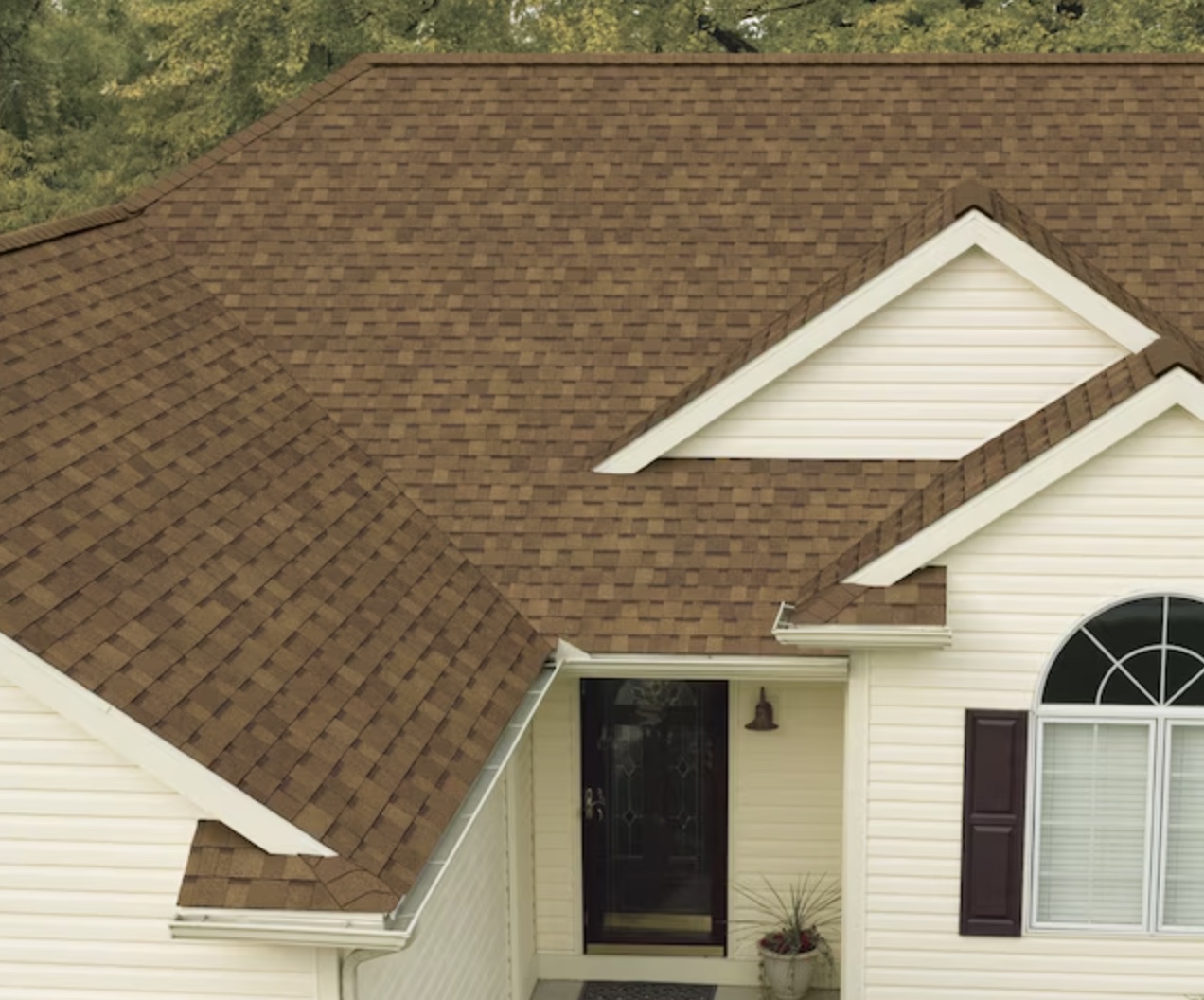
Architectural shingles are a type of asphalt shingle made with layers of material. They’re called architectural shingles because their shingle layers give the roof a texture or dimension that lower-end three-tab shingles do not. They’re commonly found on a wide range of homes, and there are varying degrees of quality.
Architectural shingles are made from layers of fiberglass mat laminated together to create depth. They’re then coated with asphalt. They’re heavier and more expensive than 3-tab shingles (typically around $5 per square foot and well north of $400 per square) but due to their thickness and ensign, they’re stronger and last longer so they are a more sustainable option than 3-tab. They can also resist wind and other environmental impacts better than 3-tab shingles, allowing manufacturers to offer longer warranty periods (up to 50 years, in some cases).
Best For: Most home styles and regions, on both newer and older homes
Our Recommendation: GAF Timberline HDZ at The Home Depot for $43.47 per bundle
With a lifetime warranty, a wind-resistance of 150 mph, and 25-year algae resistance, Timberline’s HDZ shingles are an excellent choice.
10. Aluminum Shingles
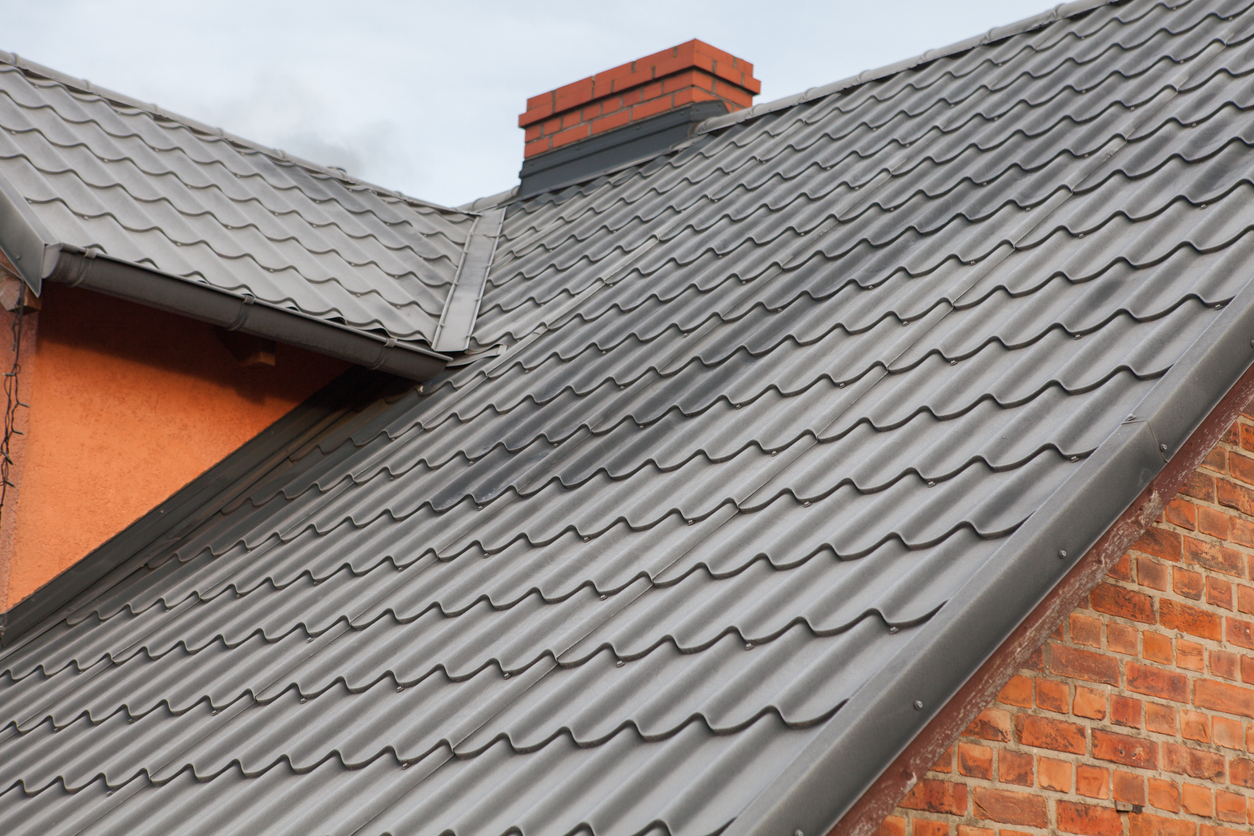
Aluminum shingles can be a great option for folks who want a low-maintenance roof. These roofing systems are generally one of the more expensive options, but due to aluminum’s rust and rot resistance, they can last for years in damp or wet environments. They come in a wide range of styles so they can fit almost any home style, but they typically mimic overlapping architectural or wood-look shingles.
There are a lot of benefits to choosing aluminum shingles. These roofing shingles are fire-resistant, durable, and have 50-year warranties. They’re also lightweight so most roof framing can hold them, and environmentally conscious homeowners will appreciate that aluminum shingles are recyclable. All of this upside does come at a cost, however: Aluminum roofing shingles are expensive ($4 to $11 per square foot and $400 to $1,100 per square).
Like many roofing materials, aluminum shingles are a specialty item and will require shopping through a specialty roofing supplier.
Best For: Regions that experience a lot of precipitation
Our Recommendation: Consult a roofing supplier
11. Rubber Shingles
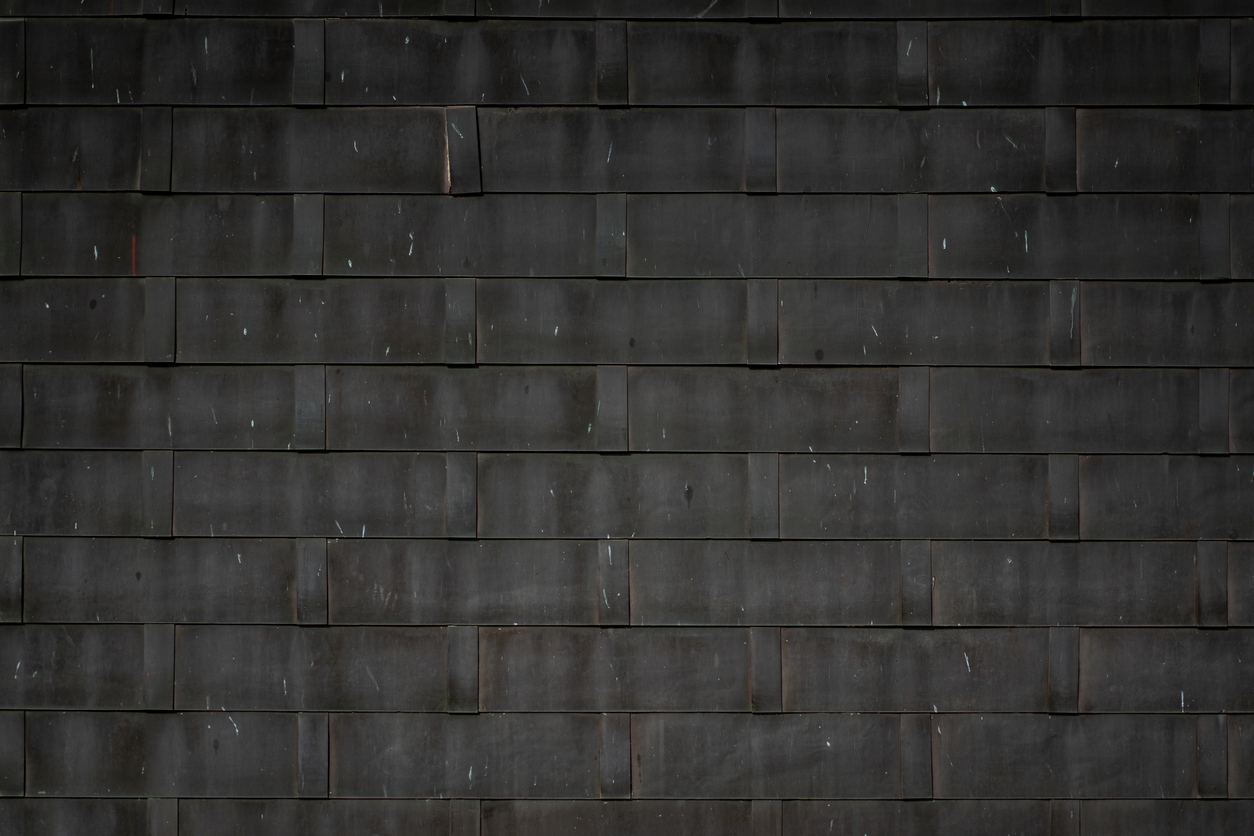
Rubber shingles are some of the most interesting roofing shingles on the market. These products are typically made from recycled tires and other materials, which makes them more environmentally friendly than many other roof types. Rubber shingles are also relatively thick, which allows them to easily mimic a natural roofing shingle like slate or cedar.
Rubber roofing shingles are extremely impact resistant, and many won’t crack or fade over time. They’re capable of withstanding extremely high winds and offer an effective sound barrier. However, rubber shingles are heavy and expensive (ranging from $3.25 to $14 per square foot or $6,400 to $12,400 for 1,500 square feet), which will make them a nonstarter for some homeowners. These shingles are difficult to find, too, because most rubber shingles are designed for siding applications. Shoppers considering this type of roof will have to consult a roofing supplier.
Best For: Environmentally conscious homeowners, loud neighborhoods, and areas that experience extreme weather
Our Recommendation: Consult a roofing supplier
12. PVC Roof Tiles
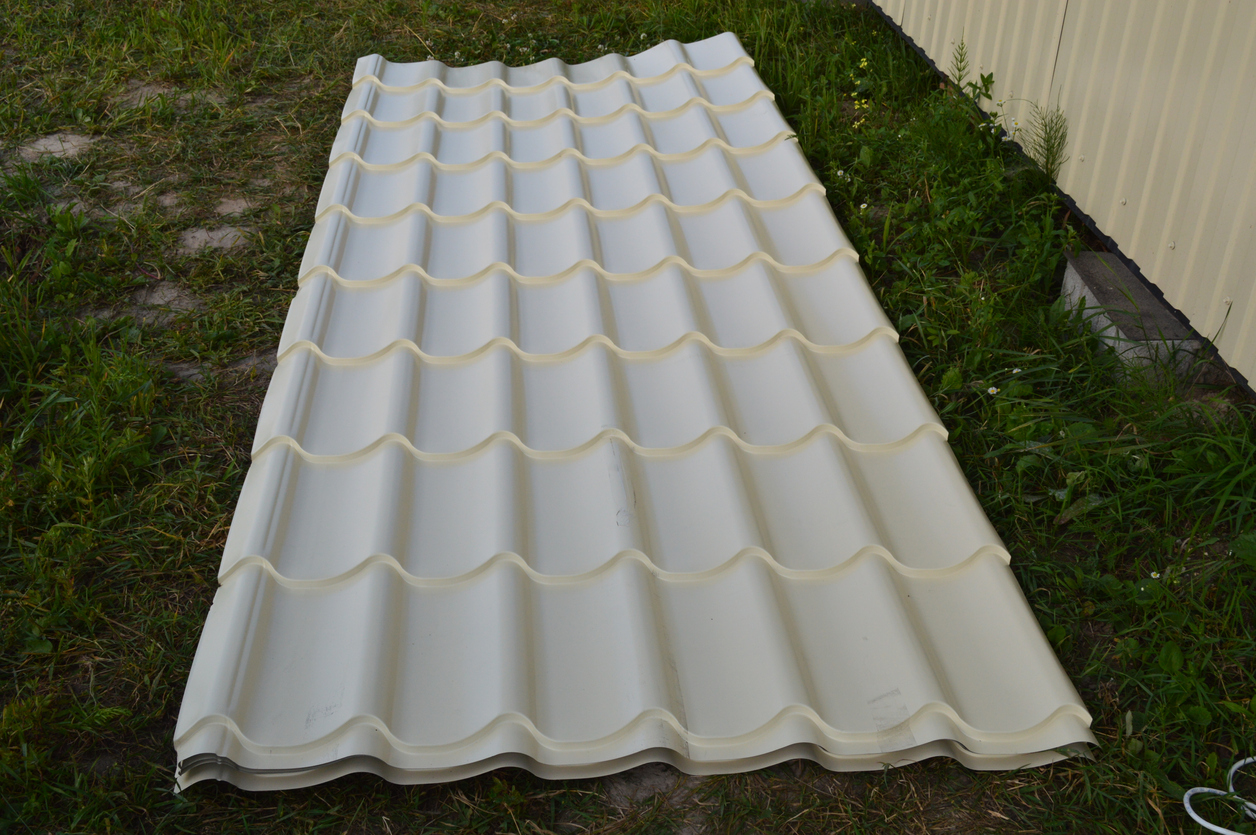
Believe it or not, plastic roofing is a thing. Composite PVC shingles exist, and these products are designed to look like terra cotta, slate, and other high-end roofing materials. PVC shingles are generally made from recycled plastics, making them a good option for environmentally conscious shoppers.
The downside is that PVC roof shingles aren’t exceptionally durable—they can become very brittle in cold weather, in fact. The upside is they’re lightweight, easy to transport, and many offer 50-year warranties. Just recognize that these products are more expensive than standard shingles ($8.50 to $14.50 per square foot), so you’d be wise to shop around.
Note: While PVC roofing panels are widely available for greenhouses, sheds, and other applications, PVC tiles are more difficult to find. Shoppers will have to consult a roofing supplier.
Best For: Environmentally conscious homeowners who live in warmer climates
Our Recommendation: Consult a roofing supplier
13. Cedar Wood Shingles
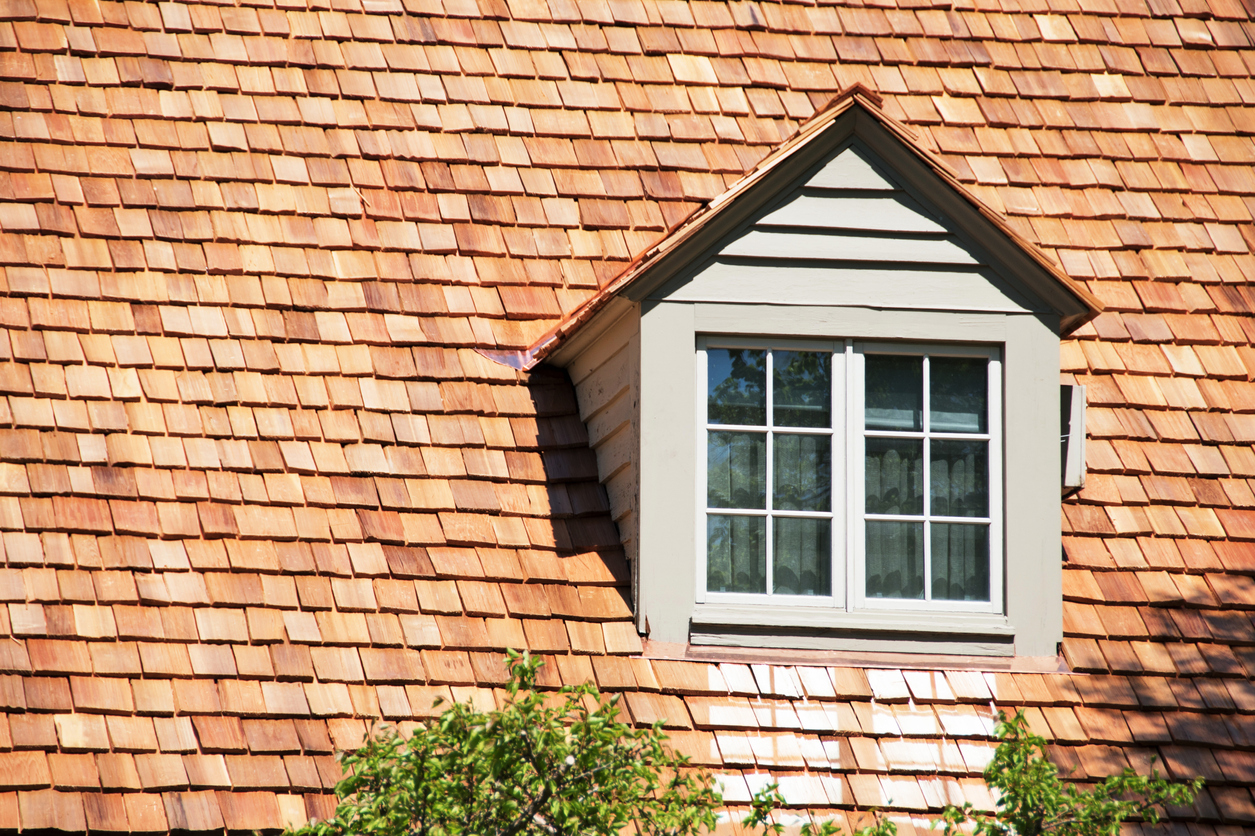
Cedar wood shingles are some of the most traditional shingles on the market, but they’re not as popular as they once were. These shingles’ most popular use is for siding, which has a rustic, beach-inspired look as it ages (if you’ve ever been to Cape Cod, you know what we mean). However, there are cedar wood shingles meant for roofs, as well.
While cedar is insect- and rot-resistant, it’s more expensive than asphalt (at about $4.88 per square foot) and is not maintenance free. Cedar shingles need to be sealed every 5 years or so, and they don’t last forever. For this reason, many shoppers decide to go with a composite material that looks like cedar rather than cedar itself. Still, there will always be homeowners who are going for the rustic look, or love the gray color these shingles become as they age. For these shoppers, cedar shingles will always be a great choice.
Cedar wood shingles made for roofs are becoming increasingly difficult to find on home improvement store shelves. Shoppers may need to consult a roofing supplier for a shingle that’s designed for roofing applications, and they need to also check their local building codes to ensure they’re code compliant.
Best For: Rustic building and outdoor structures
Our Recommendation: Consult a roofing supplier
14. Steel Shingles
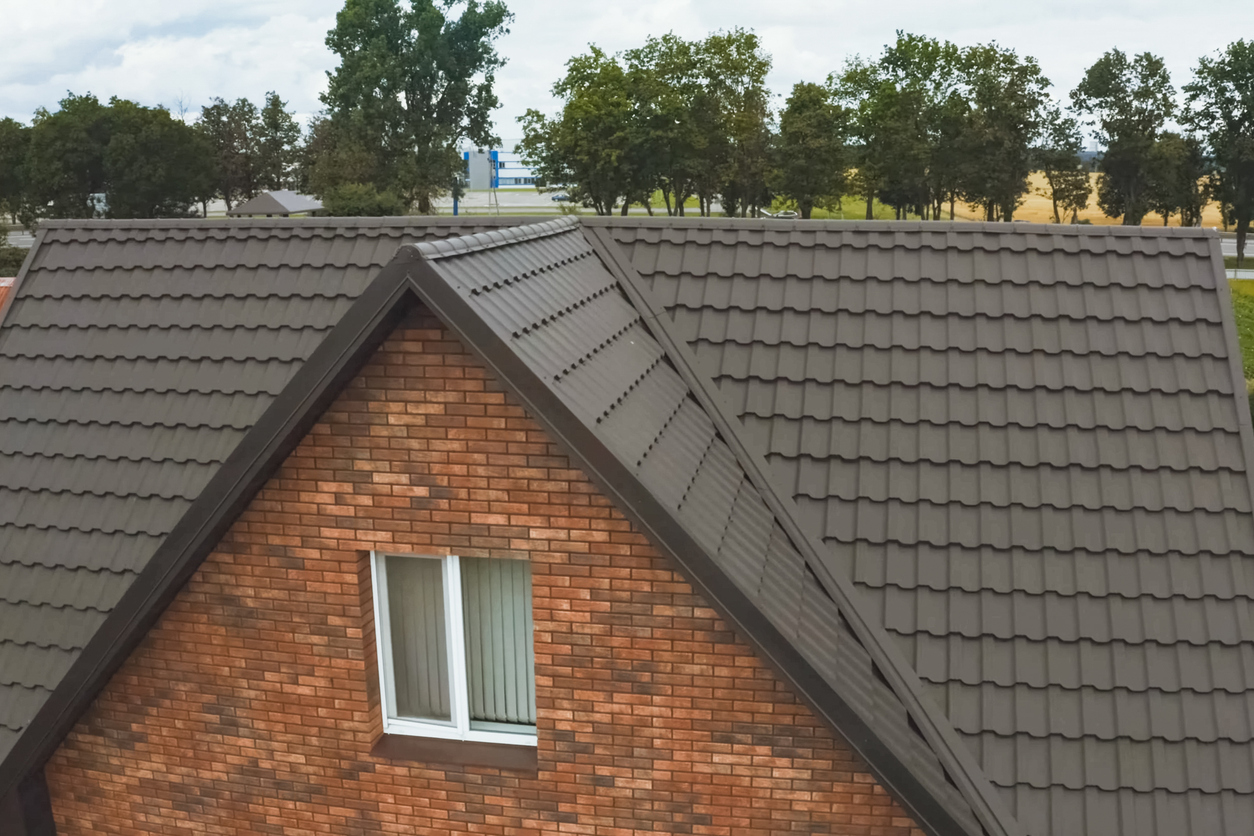
While most homeowners know about standing seam metal roofing, they might be surprised to know that there is such a thing as steel shingles. Much of the surprise is due to the fact that steel shingles look so much like standard shingles that telling the two apart can be a challenge. However, steel shingles are worth considering due to their durability and impact-, wind-, and rot-resistance.
Steel shingles are quite eco-friendly. They’re often made of a high percentage of recycled materials, and when the roof has run its course, they’re 100 percent recyclable. These shingles come in a wide range of colors and designs, and are even suitable for re-covering roofs without removing existing shingles. The big drawback to steel shingles is that they are fairly expensive ($4 to $20 per square foot) and difficult to find, so shoppers will, again, have to consult a roofing supplier.
Best For: Environmentally conscious homeowners, roof recovering, high-moisture regions
Our Recommendation: Consult a roofing supplier
15. Standing Seam Shingles
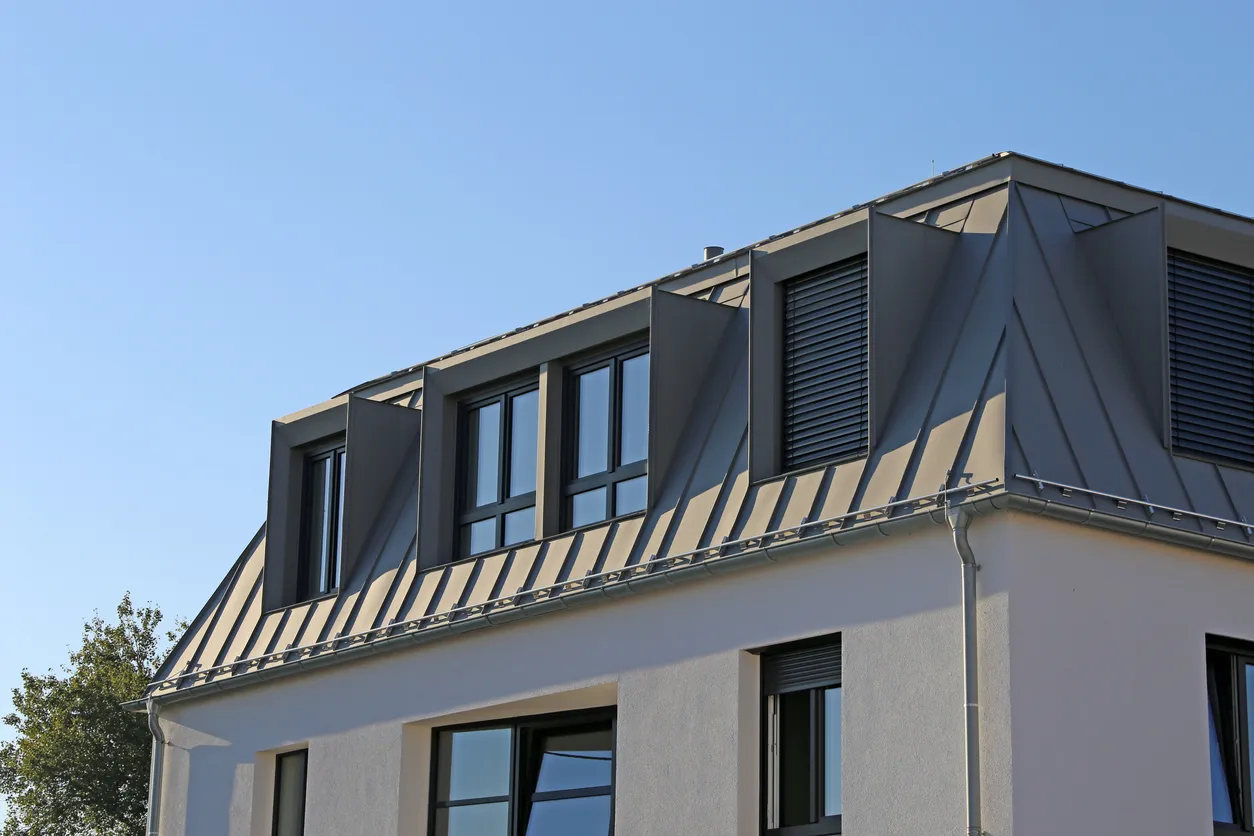
Standing seam roofing usually comes in large panels that are 12 or 16 feet long, but standing seam shingles are different. While they’re made of the same materials (steel, aluminum, copper, and other similar metals), standing seam shingles are much shorter. They usually come in pieces that are 36 inches long, and the upper course laps the lower course similarly to how a standard asphalt shingle roof does. The seams also overlap each other, creating a strong, durable roofing system for a wide range of environments and regions, including high-wind, high-precipitation, and other areas.
Steel shingles aren’t widely available at the time of publication, and that’s typically their biggest drawback—along with a more expensive price tag (starting at about $8 to $21 per square foot). Shoppers can try their local roofing supplier, but it might take some effort to track down these materials.
Best For: Most environments, regions, and moisture levels
Our Recommendation: Consult a roofing supplier
16. Solar Shingles
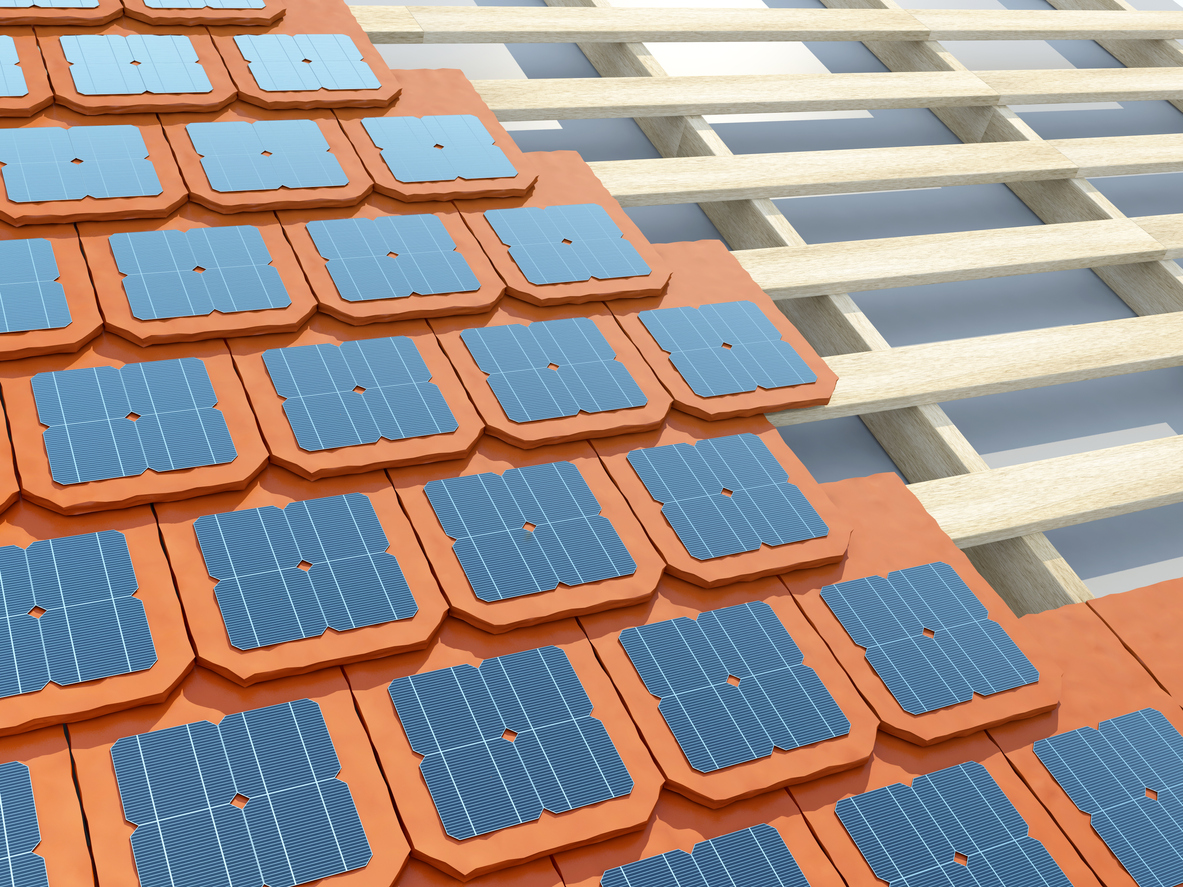
Solar shingles are some of the biggest advancements in roofing technology over the last few years. Rather than the homeowner installing large, obtrusive panels, they can install solar shingles, which mimic the look of standard shingles while also providing power to the home’s grid via sunlight.
Solar shingles are expensive so shoppers need to know that they could potentially spend a lot of money on this project. However, with adequate sunlight, it might be an idea worth considering.
Beyond the expense (about $21 per square foot), homeowners also need to understand that these are not generally DIY-friendly projects. Solar shingles require an experienced crew that knows how to install them. They’re also not readily available for residential purchase yet.
Best For: Off-grid homes, environmentally conscious homeowners
Our Recommendation: Consult a specialty roofing installer
17. Copper Shingles
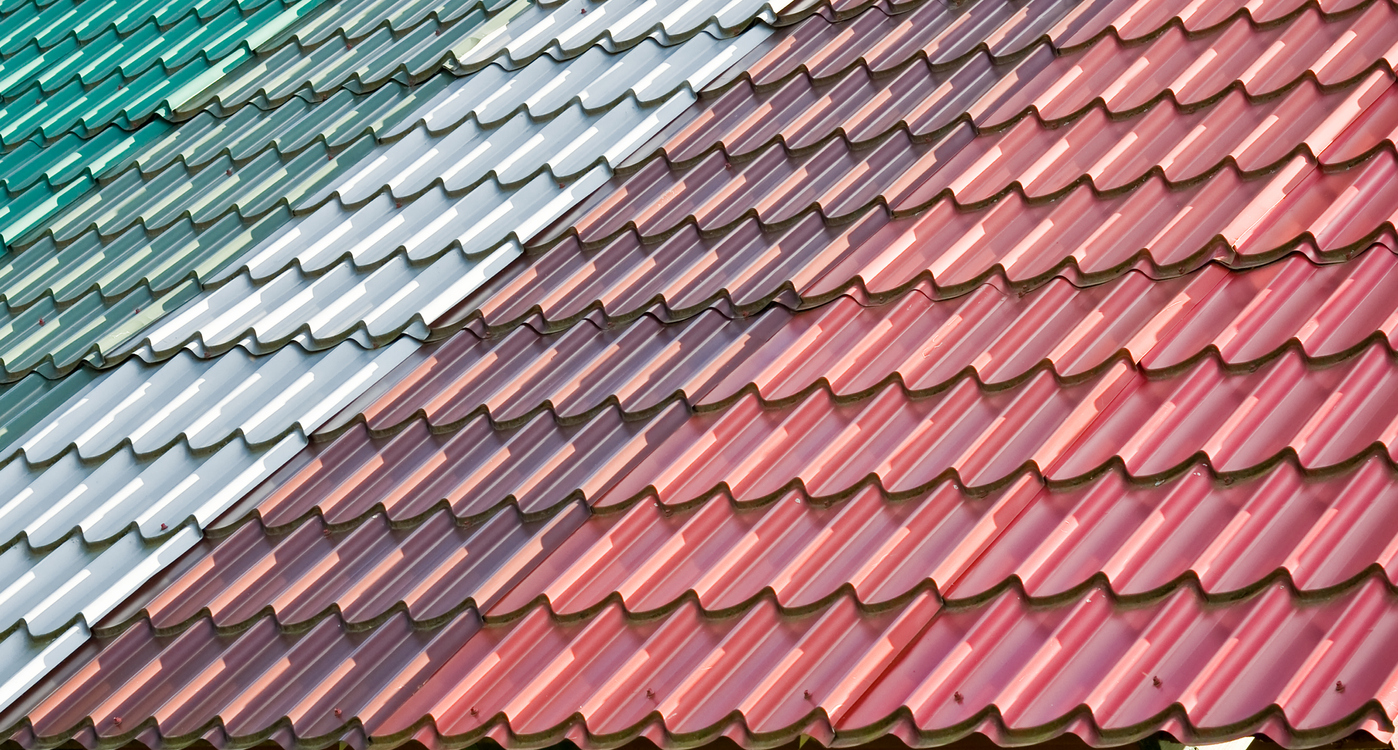
Copper shingles are really just a subcategory of the metal shingles we mention above. These shingles are durable and weather-resistant. Copper contains very little iron, however, so it will not rust over time like some other metal materials will. Copper may oxidize and turning green, but this doesn’t affect its ability to protect a home as a roofing material.
Copper shingles come in a few varieties, but most feature some type of interlocking installation system. Keep in mind that copper roofing is very expensive ($20 to $40 per square foot), and not all roofing companies will be able to install it. If you can swing the cost, you’re set for a century: These shingles can last for 100 years, according to some experts, and can be a great addition to an older, historical home. Copper shingles can also work well on barns and other outdoor structures that benefit from metal roofing. This is another roof shingle type that can be difficult to find—again, shoppers should check with a local roofing supplier or installer.
Best For: Historical homes, barns, and other outdoor structures
Our Recommendation: Consult a roofing supplier or installer
18. Impact-Resistant Shingles
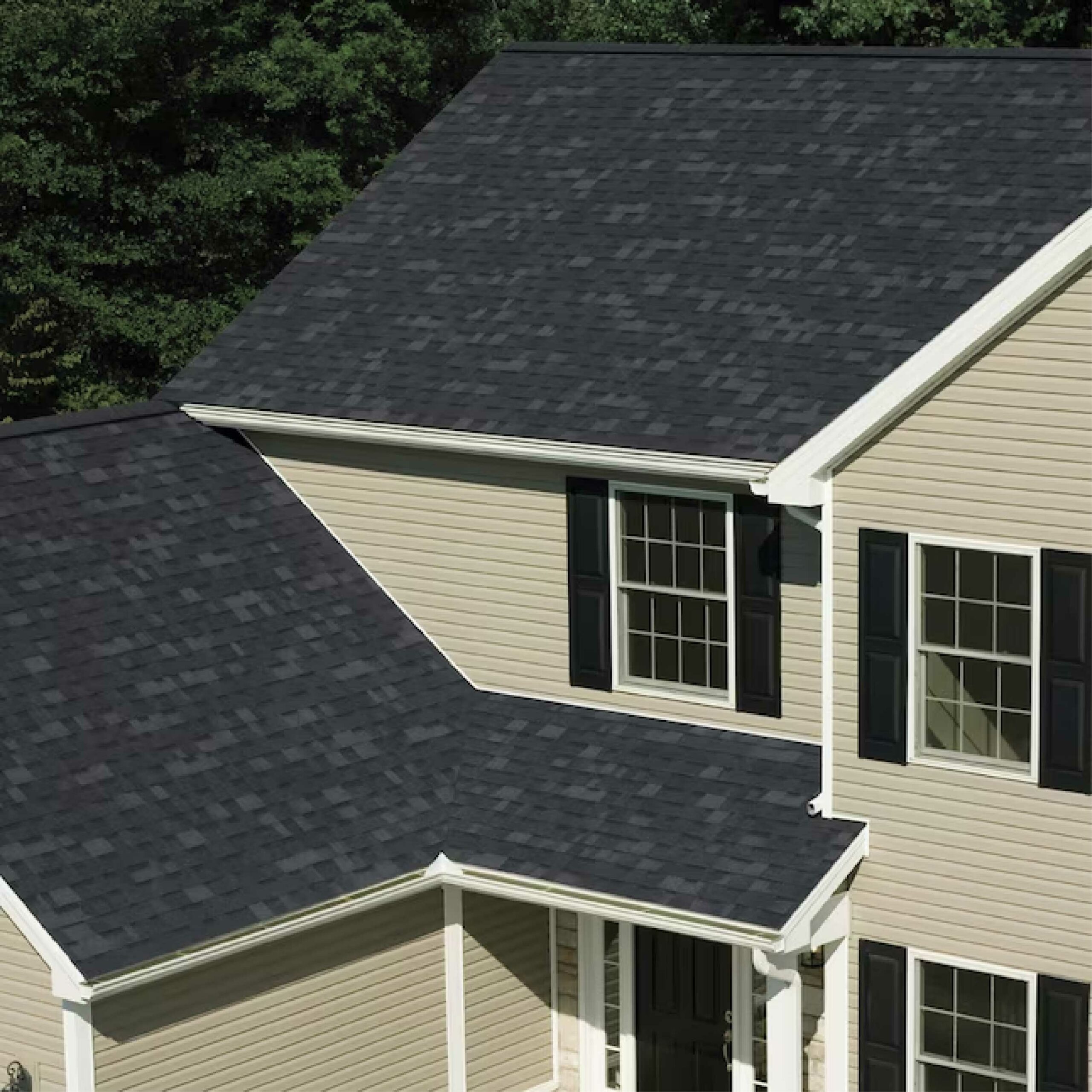
Impact-resistant shingles, also known as Class 4 shingles, are engineered to withstand hail impacts and other damage without ill effects, which is something most shingles cannot offer. They generally contain a polymer mesh and rubber polymers, making these shingles extremely durable. The good news is that impact-resistant shingles can also be affordable, with impact-resistant architectural shingles running about $13 per square foot and $130 per square.
Impact-resistant shingles are usually available in a variety of styles like architectural or three-tab, and many different colors. These shingles are so stylish that it’s not possible to tell a Class 4 roofing shingle from a standard shingle from a home’s front yard. Some varieties are also resistant to algae and high winds, making them a great choice for almost any region of the country.
Best For: Most applications in any region of the country, especially where hail or other environmental impacts are common.
Our Recommendation: Owens Corning Oakridge at Lowe’s for $37.98 per bundle
Owens Corning Oakridge architectural shingles feature a Class 4 rating, a 130-mph wind resistance, and algae protection at a reasonable price point.
Final Thoughts
Knowing about the different types of shingles helps homeowners choose the material they find to be most suitable for their homes. Just be sure to weigh out the pros and cons of each shingle and the conditions for which they’re best suited. For more information on roofing, check out this guide on installing a new roof or this guide on replacing roof shingles.
